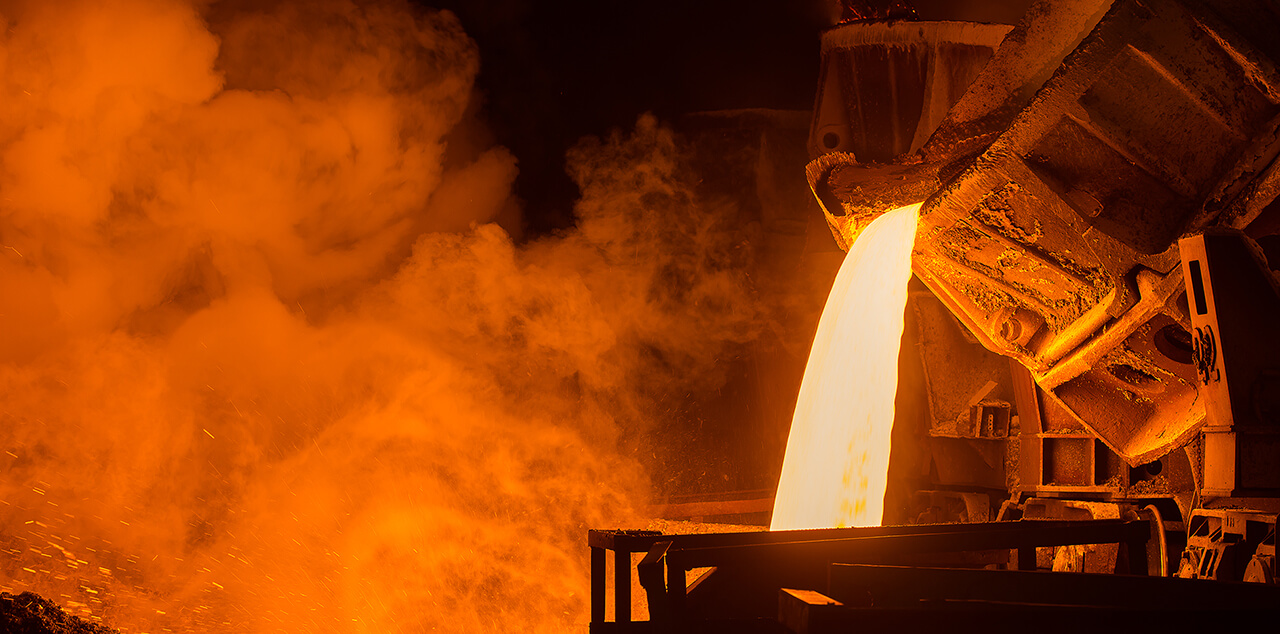Extremely hot and extremely heavy: converters in steel works not only have to withstand temperatures of up to 1,700 °C but are also required to hold several hundred tons of weight. Despite these requirements, the huge containers need to be tipped with maximum precision to tap off the liquid raw steel obtained and the slag left behind. Our case study reveals the advantages that encoder modernization can bring when it comes to monitoring the tipping angle.
Precisely handling heavy weights
An essential stage of the raw steel production process takes place inside converters. Here, oxygen is added to liquid raw iron to remove the accompanying elements of silicon, manganese, phosphorus and carbon from the molten mass, leaving behind liquid raw steel and a metallurgical slag. These two substances need to be removed from the converter separately. To achieve this, the hot container, which can sometimes weigh up to 400 metric tons, is tipped twice – once to tap off the raw steel, which flows into the steel ladle, and a second time in the other direction to tap off the slag. To ensure controlled and precise tipping movements, the tipping angle of the converter is usually measured with absolute encoders and monitored with mechanical cam limit switches.
A compact and robust Hübner Giessen solution
At a steel works, the existing solution comprising an absolute encoder, a mechanical cam limit switch and an additional distribution gear was no longer precise enough. The operators of the works were therefore looking for a more precise and simple system. The experts at Hübner Giessen met their needs by coming up with a compact solution that was easy to mount and offered simple parameter configuration. You can find out which products were combined in this solution and whether it is suitable for safety certification in the case study “Converter / Tipping angle: a replacement solution for tipping angle monitoring”.

